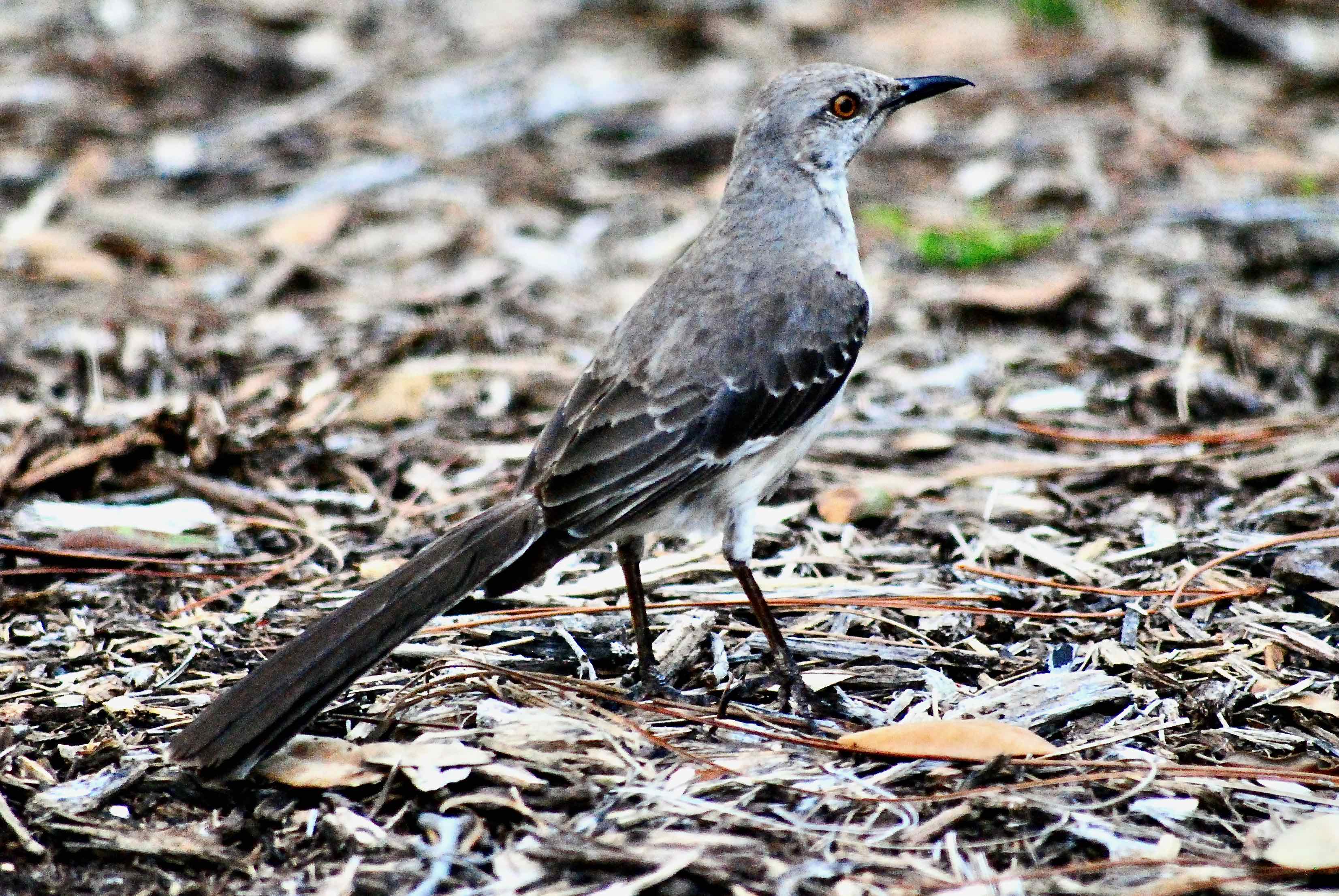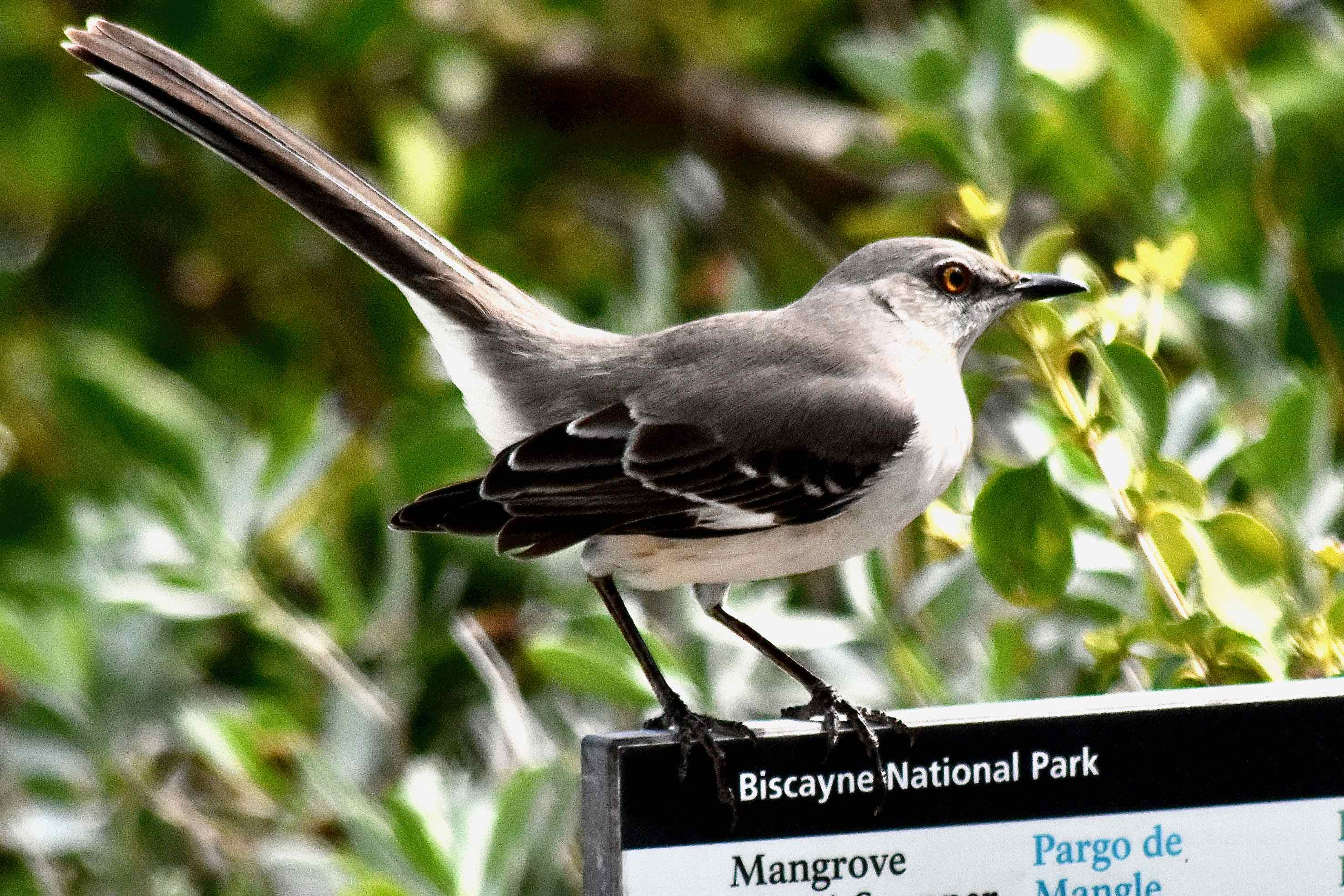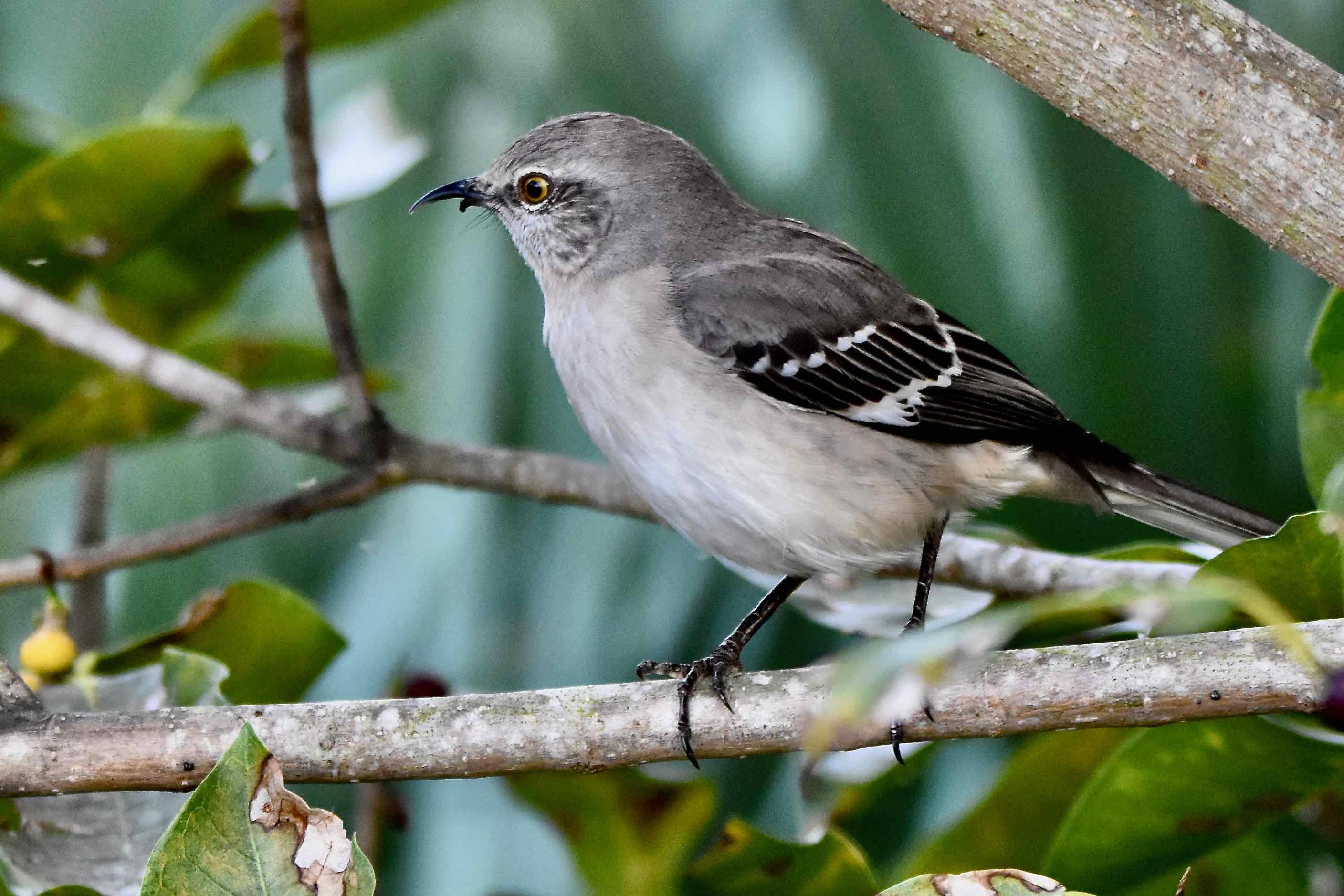
Northern mockingbird, photographed at North Jupiter Flatwoods Natural Area, Jupiter, Palm Beach County, in March 2018.
By act of the 1927 Legislature, the Northern mockingbird, is, officially, Florida's state bird. According to Senate Concurrent Resolution No. 3, the "melody of its music has delighted the hearts of residents and visitors to Florida from the days of the rugged pioneers to the present comers."
The selection of Mimus polyglottos, (that name tells you a lot about this bird) makes sense in some ways, not so much in others. On the plus side, it might be the most common songbird in the Sunshine State. It's found everywhere from the western limits of the Panhandle to the southern-most of the Keys and all points between, with the exception of the western Everglades.
On the other hand, there's nothing that particularly says Florida about the Mockingbird. It's found through most of the United States, and is the official bird of Arkansas, Texas, Tennessee and Mississippi. It's often seen as a symbol of the South, yet it is the Northern mockingbird, with a range that extends into southern Canada. Mexico, the Bahamas and the Caribbean are also home for this bird.
The '27 Legislature was right about one thing: Northern mockingbirds are quite the singers. According to the Cornell Laboratory of Ornithology, a male mockingbird will build a reportoire of 200 songs during his lifetime. They are especially vocal in spring and summer during breeding season. Hear an unusual bird call? Think it's something new and exotic? There's a good chance what you're hearing is the ubiquitous mockingbird.
In the 1890s, they were so prized for their singing abiity that they were caught, caged and sold for as much as $50, depending on the talents of the individual bird.
Contrary to the brightness of their song, northern mockingbirds are a bit drab when it comes to looks. They are medium-sized, mostly gray with a long, thin bill with a slight downward curve at the tip, and a long tail. They have black and white bars on their wings that flash when the bird flies. They go about nine to 11 inches in length, have red-brown eyes with a dark eye line.
There are a few birds that resemble the northern mockingbird, the closest of which are the blue-gray gnatcatcher and the loggerhead shrike. Gnatcatchers, however, are about half the size of the mockingbird, and the shrike has a large, black mask on its face with a bit of a raptor's hook at the end of the bill. The mockingbird is unmistakable in flight, with its white wing bars apparent.
Northern mockingbirds are omnivores, eating bugs and lizards through much of the spring and summer, and berries in fall and winter. Also on their menu: crawfish, snails, lizards and the occasional small snake. Also on the menu: poop. They can become aggressive when defending a patch of tasty berries against marauding robins or cedar waxwings, according to the Florida Fish and Wildlife Conservations Commission.
As noted above, they're probably the most common songbird in Florida, found in scrubs, the 'burbs, in open fields and along the edges of forests and hammocks. According to the FWC, a 1969 study found that there were as many as 400 mockingbird pairs per 100 acres in the St. Petersburg area.
One of the key reasons why the northern mockingbird is so abundant is its ability to thrive in human-altered environments. They also reproduce quickly; a pair can have as many as three broods a season in Florida. One pair was documented as having four broods in four months, April through July, according to the FWC.
In Florida, breeding season begins as early as February and continues into August, peaking in May and June. Both males and females take part in constructing a bulky nest made of sticks and lined with finer material. Females typically lay clutches of two or three eggs, which take a little less than two weeks to incubate. Mom handles sitting duties. Both parents feed their offspring until they're ready to leave the nest 10 to 12 days after hatching. For the parents, it's rinse and repeat a second time and possibly a third.
Do a little research and you'll read accounts of northern mockingbirds attacking humans. These aren't fiction. They do happen. But it's almost always when said humans knowingly or unknowingly approach a mockingbird nest filled with eggs or chicks and the occupants get a little uneasy about their presence. It happened a few years ago in Boca Raton, the target so angry that she made something of a campaign to have the mockingbird dethroned as the state's official bird. (Her suggestion as a replacement: the flamingo. Really.) One of the things these incidents spotlight is the intelligence of the northern mockingbird, a word not usually associated with birds. Experiments by University of Florida researchers in 2009 found that mockingbirds were able to identify people who regularly approached their nests. They could assess risks people posed to their offspring and identify people out who frequently approached the nest even in a crowd and even after they changed clothes.
Northern mockingbirds are members of the family Mimidae.
Click on photo for larger image
Links for Northern Mockingbird



